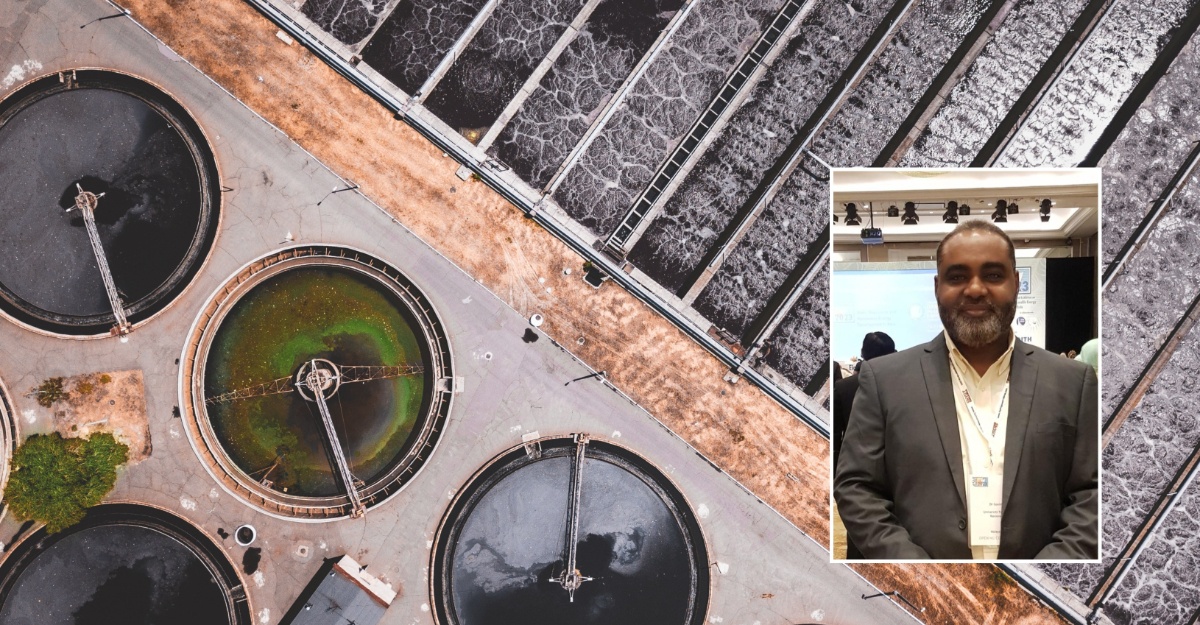Wastewater treatment plant is a complex facility that cleans the used water (wastewater) through multiple processes and equipment that typically consume energy and associated with emissions and waste by-products.
Water is vital for every living thing, and in addition to being used for human consumption, water is an essential resource for all types of industrial processes and the goods production. Water supply needs to be good in quality and sufficient in quantity. When water is used for any kind of activities and become polluted then it is considered as a wastewater that require proper treatment to protect human health as well as the environment.
The United Nations (UN) Sustainable Development Goals (SDGs) number six (SDG6) is about Clean Water and Sanitation. SDG6 is to ensure the availability and sustainable management of water and sanitation for all. Water and sanitation are at the core of sustainable development, and the range of services they provide underpin poverty reduction, economic growth and environmental sustainability.
The availability and management of water supply is having more attention as the public can realise it immediately in the event of water cut or disturbance of water supply and or quality. However, sanitation and wastewater management does not have the same attention although it cost more and can affect the water supply and the environment when it is discharged without proper treatment.
Wastewater treatment is typically considered as a sector that requires fund with no return as well as energy demanding. The treatment plant and processes associated with this sector required huge investment and no gain is realised. Public perceptions are not always positive as the service is not always appreciated or realised.
Wastewater treatment plants use a lot of energy, but there are also a number of resources that could be recovered from wastewater. There are several options that will help to produce more energy from wastewater treatment plant than it does consume and become energy positive. Similarly, there are several steps could be taken to recover effectively more resources and recycling. The optimisation of the treatment processes via monitoring with internet of things (IoT) and modelling with artificial intelligence (AI) will increase the treatment efficiency, reduce the energy consumption, and lower the operational cost.
Water reuse, micro hydropower, nutrient recovery, sludge and residuals reuse (bioenergy, fertiliser, biosolid, soil conditioner, landfilling, building, pavement), solar farm, and others are all ready to be implemented to help closing the loop towards modern circular economy based sustainable wastewater treatment plants. Therefore, it is important to increase the potential for both resources and energy recovery in wastewater treatment plants.
It is visible and should be the expectation from every newly constructed wastewater treatment plant to be designed in such a way to include in the design requirements multiple objectives. Existing plants could be upgraded gradually towards this concept. The brighter future of wastewater treatment plant is by implementing the waste to wealth strategy firmly and explicitly in all plants taking into consideration waste to energy as well.
It is time to shift our perspective on wastewater treatment plants. Rather than viewing them as “waste” facilities, it is crucial to recognise the invaluable role they play in resource recovery and environmental preservation. Let us embark on a journey of rebranding, transforming the very name and perception of these plants.
Imagine a Clean Water Plant, a Wastewater Recovery Plant, or a Water Renewal Plant—these names evoke a sense of purpose and progress. They reflect the mission to transform wastewater into purified water, while simultaneously recovering valuable resources and generating energy.
By embracing this friendlier and more inclusive terminology, we pave the way for a future where wastewater treatment plants become champions of sustainability. These plants can serve as beacons of innovation, actively contributing to the circular economy and supporting the United Nations’ Sustainable Development Goals (SDGs).
Instead of sticking with the traditional name of Wastewater Treatment Plant (WWTP), perhaps it would be more fitting to consider calling them Water and Resources Recovery and Energy Plants (WREPs), don’t you think?



